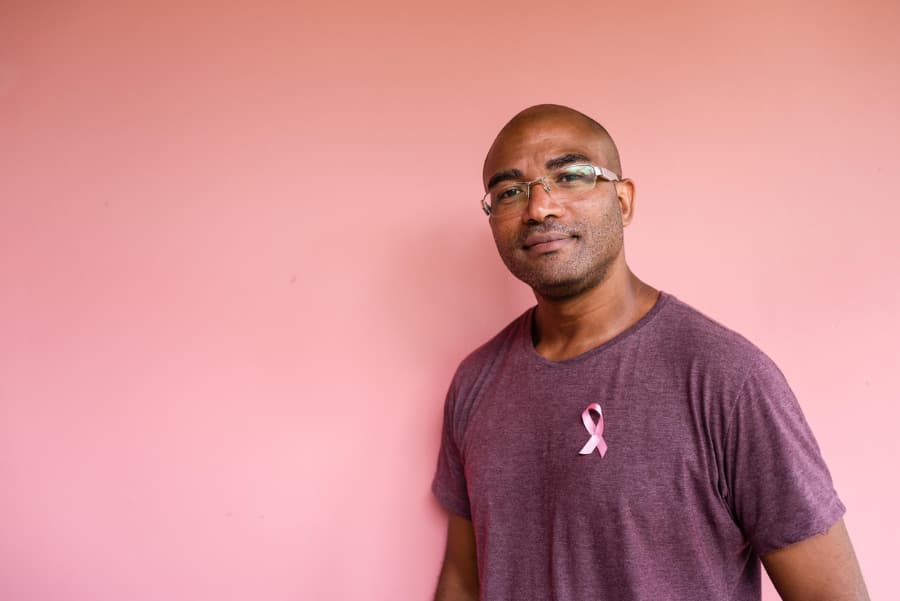Many people hear the words “breast cancer” and think immediately of women’s health, but men can also develop breast cancer. While male breasts do not serve the same function as women’s, they still have a small amount of tissue behind the nipples where cancer may grow. To ensure men know when to speak to their physician about this issue, Richmond University Medical Center, in Staten Island, NY, discusses the indicators of male breast cancer.
Understanding Male Breast Cancer
While breast cancer does occur in men, it is incredibly rare. According to the Cleveland Clinic, less than 1% of all breast cancer cases happen in men in the United States, which equates to approximately 2,600 people. It mostly affects older men, but younger men may contract the disease in some instances. It is also more common in African-American men.
Typically, male breast cancer begins in the ducts (ductal carcinoma) and then spreads to other areas of the body. However, men also may develop the following other types of breast cancer:
- Lobular carcinoma: This cancer originates in the milk-producing glands (lobules). However, since men have fewer lobules than women, it is unusual for them to develop this condition.
- Inflammatory breast cancer: Exceptionally rare in men, this type of breast cancer features swollen, red tissue. It comes with a warm sensation and sometimes dimpled skin, but not a lump.
- Ductal carcinoma in situ (DCIS): If cancer cells grow in the lining of the breast ducts but do not spread, a patient has DCIS.
- Paget’s disease of the nipple: Also referred to as mammary Paget disease or Paget’s disease of the breast, this variation starts in the ducts and moves to the nipple and surrounding area.
What Are the Symptoms?
Unlike women, men usually do not get regular mammogram screenings. As a result, physical issues are often the first indication of breast cancer they observe. Some warning signs of male breast cancer include:
- Painless, thickened section (lump) in the breast tissue, the armpit, or behind the nipple
- Enlarged, deformed, puckered, or sunken skin around the breast tissue
- A red, flaky, or scaly look on the breast or nipple
- Dimples, small divots or pits in the skin
- Pain or discomfort in the underarm or area surrounding the breast tissue
- Lingering soreness or rash around the nipple
- Nipple or surrounding skin swelling or hardening
- Nipple discharge potentially streaked with blood
- Nipples turning inward
- Small bumps in the armpit, or swollen glands
- Skin ulcers
When Should Men Reach Out to Their Physicians?
Men experiencing the mentioned symptoms should turn to a medical professional for breast cancer treatment. These physicians have the expertise and resources necessary to diagnose and treat the disease. If the healthcare provider finds a man has breast cancer, they will educate him on all aspects of the diagnosis and treatment, such as:
- The specific type of breast cancer
- The size of cancer and where it has spread
- The progression (stage) of the cancer
- Additional tests needed to form a more accurate diagnosis
- Any specialists the patient must visit
- Treatment options and different surgeries
- What goes into treatment and how long it will last
- Potential risks and side effects
As a preventative measure, a male patient also may contact their physician if one or more of the following risk factors for breast cancer apply to their situation:
- Obesity
- Family history of breast cancer
- Heightened estrogen levels from taking certain medications
- Previous radiation therapy
- Previous surgery to remove a testicle due to cancer
- Sustained a testicular injury
- Genetic mutations that elevate the risk of developing breast cancer
Obtain Male Breast Cancer Care at Richmond University Medical Center
When men recognize the signs and symptoms of male breast cancer, they are better equipped to contact their physician for treatment. Patients in Staten Island, NY, can trust Richmond University Medical Center for help. At the Breast and Women’s Center, patients can receive several services, from routine mammograms to surgery. The highly skilled team of board-certified and fellowship-trained physicians and radiologists is dedicated to delivering compassionate and customized care using the most state-of-the-art technology available.
Contact us today to learn more about the treatment for male breast cancer and other care services.




